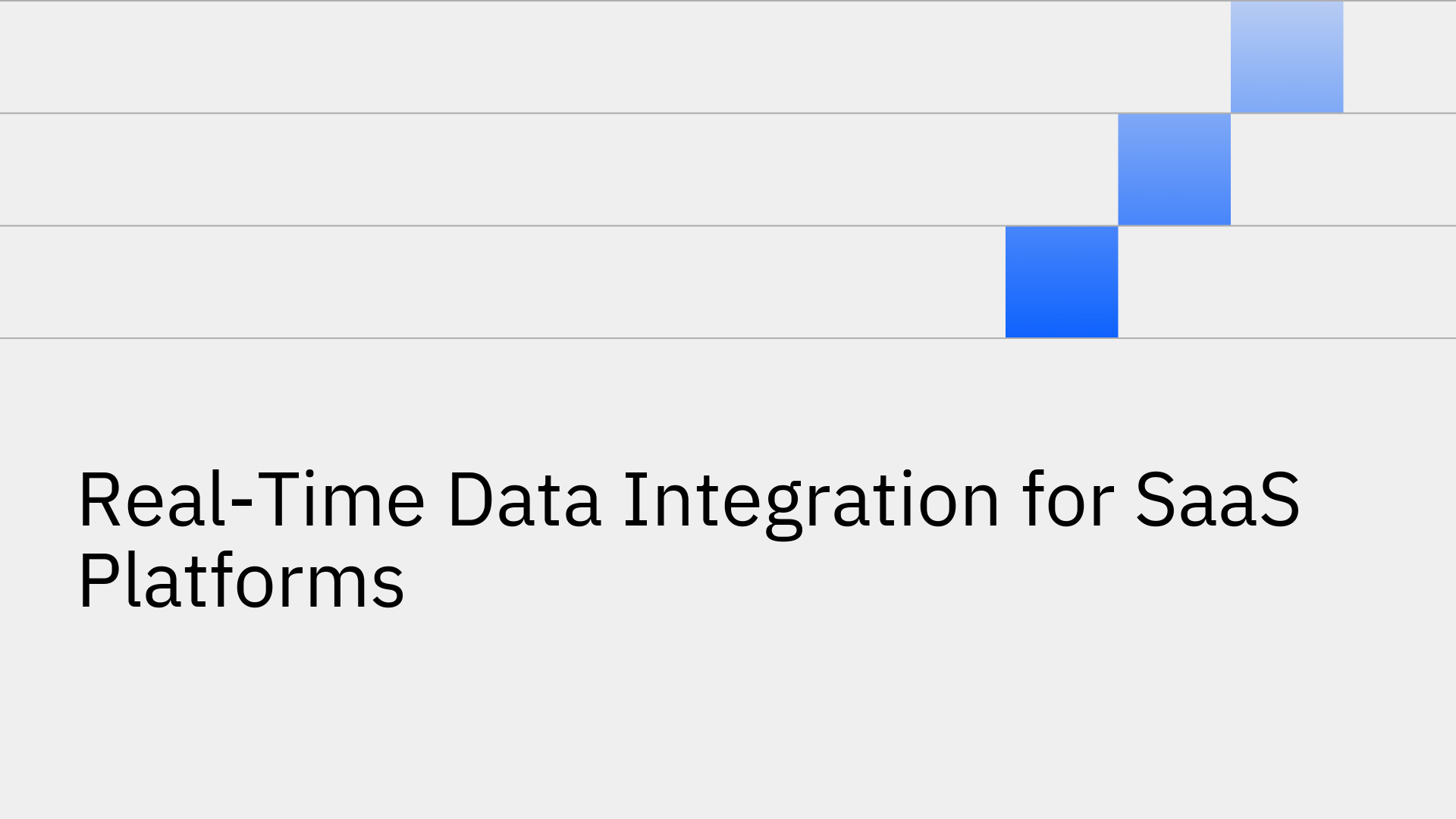
In the competitive landscape of the Technology and SaaS industry, the ability to act on data instantaneously is a critical advantage. Real-time data integration is the process of capturing and processing data from multiple sources the moment it becomes available.
This approach provides immediate access to high-quality data, enabling faster and more informed decision-making [1]. Unlike traditional batch processing, which introduces inherent delays by moving data in scheduled chunks, real-time integration operates continuously [6].
This article explores the benefits, use cases, and challenges of real-time data integration for SaaS platforms, outlining how to implement it effectively to gain a competitive edge.
Real-time data integration is the immediate, continuous synchronization of data between disparate systems and applications. This ensures that all connected platforms reflect the most current information. The key characteristics of real-time data include immediate availability, a continuous flow of updates, and its time-sensitive nature [4].
While batch processing collects data in groups and transfers it on a schedule, creating latency, real-time methods provide instant updates. The choice between comparing real-time vs. batch synchronization for CRM data depends on the specific business need for data immediacy. To achieve this instant synchronization, real-time integration employs technologies like Change Data Capture (CDC) and streaming to process data as it is generated [3].
Instant data access allows SaaS companies to innovate faster, respond to market changes, and deliver a more responsive user experience, creating a significant competitive advantage.
By syncing data across all touchpoints—such as CRM, support desks, and product analytics—SaaS companies achieve a 360-degree customer view. This unified profile enables highly personalized in-app experiences and proactive support, as every team works from the same up-to-date information.
Real-time data empowers teams with up-to-the-minute insights for better strategic decisions. The automation of data flows eliminates manual data entry, boosting operational efficiency and reducing human error [5]. Research shows that businesses leveraging real-time data can achieve up to 62% greater revenue growth and 97% higher profit margins [7].
SaaS companies can create a single source of truth by syncing data from platforms like Salesforce, HubSpot, and their own product databases. This ensures that sales, marketing, and support teams always have the most current customer information. A common and powerful example is establishing real-time data sync for Salesforce Postgres integration, connecting a primary CRM with an operational database.
Real-time user behavior data can power personalized content, recommendations, and feature suggestions directly within a SaaS application. For instance, an e-commerce platform with real-time ERP integration can display accurate inventory levels to customers, preventing overselling and improving trust [2].
Integrating data into a centralized analytics platform or data warehouse in real-time enables live monitoring of key performance indicators (KPIs). This is crucial for product teams tracking feature adoption, marketing teams assessing campaign performance, and leadership monitoring overall business health. This approach surpasses traditional, batch-based ETL tools that cannot provide immediate insights.
Real-time integration can trigger automated workflows across different tools. For example, a "closed-won" deal in Salesforce can automatically create a customer account in the company's product, enroll them in an onboarding sequence, and trigger a welcome email from a marketing automation tool. This level of automation is made possible by automated real-time data sync tools to connect SaaS systems.
Despite its benefits, implementing real-time data integration presents several hurdles:
A dedicated real-time data integration platform overcomes these challenges by abstracting away the underlying complexity and providing a purpose-built solution for reliable data synchronization.
Stacksync is a platform designed to provide real-time data sync simplified for modern teams, removing the engineering complexity of building and maintaining integrations.
Real-time data integration is no longer a luxury but a necessity for SaaS companies seeking a competitive edge. It unlocks superior customer experiences, smarter decision-making, and greater operational efficiency [8].
While building these integrations in-house is complex and resource-intensive, dedicated platforms offer a scalable and reliable path forward. When evaluating options, using a data integration platform comparison chart for real-time sync can help identify the right solution for your specific needs.
Unlock the full potential of your data and accelerate your growth. Start your free trial of Stacksync today or book a demo to see how our real-time integration platform can transform your business.